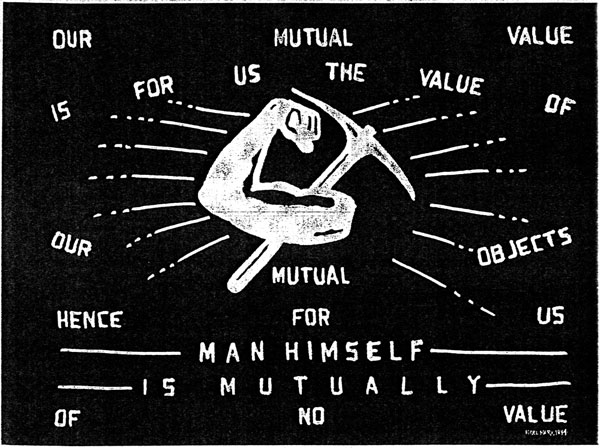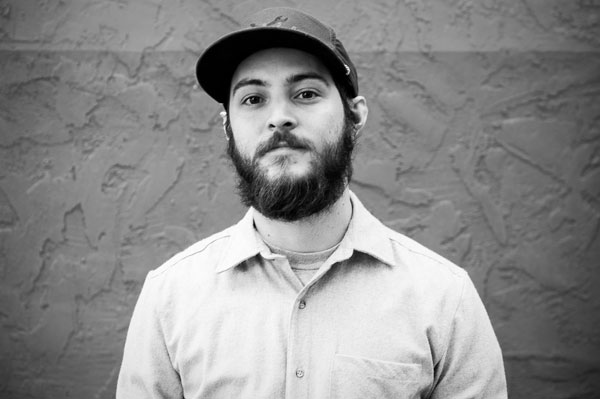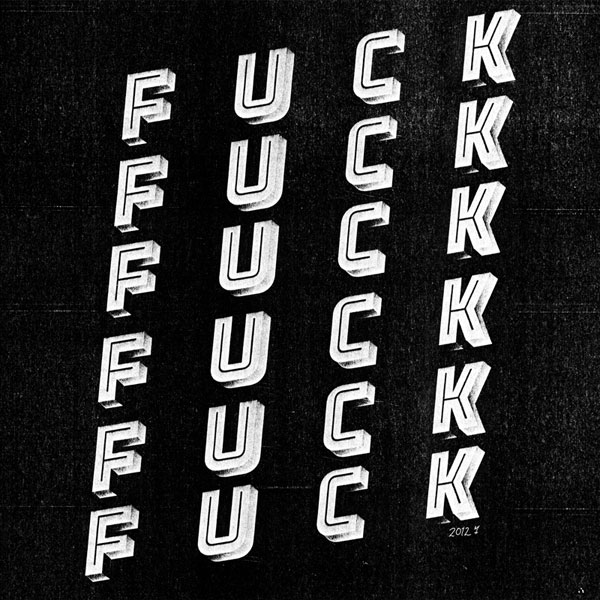One Minute With…
Matt Thompson

Hi Matt, thanks for taking time to chat with One Minute With. Tell us a little bit about yourself and your work.
Hey Conor, thanks for reaching out to me. I currently reside in Austin, TX where I am finishing up school and freelancing a bit. I’m currently working on a poster series that are experimental prints with various substances as inks. My design work revolves around branding and identity, typography/lettering, illustration and editorial/publication. I am not a stranger to the web/interactive side though.
Walk us through a typical day in the life of Matt Thompson.
Every day is different for me, usually. If I have a project I’m working on or an idea of something I want to make I’ll work on that. If it’s looking like a slower day I’ll take it easy and browse the web for a bit and try to get out of the house. Lately the weather here in Austin has been really nice in the earlier parts of the day so I try to take advantage of that before the heat starts to rise. When it’s a busy day I’ll start working around 10 or so and take a few breaks during the day. I’ll usually stop working, if I can, around 5 and step away from my work for a bit and get out of the house. At night my girlfriend and I usually make, or get, something to eat and watch something on TV or ride bikes around town.

How did you get into design? Was there a defining point in your career, and if so, how did it shape you as a designer?
I have always been fascinated with logos and really cool type treatments. When I was in middle school I use to spend a lot of time on the Internet downloading free fonts to the family computer and playing with them in MS Paint. In school I would always be drawing BMX logos all over my notes or folders instead of paying attention, which seemed more interesting to me. Eventually I found design from a few projects/teachers in high school while also being in bands and creating shirts, websites and posters for shows, then tried to start learning as much as I could about it.
A defining point for me as a designer I think has been making the choice to go to school for it. It has helped me make a ton of progress over the last 2 and half years. Great things have happened since, but it’s all rooted from that, and what I have made from it.
How do you approach a new project? What’s your creative process like?
I generally like to go about creating something somewhat slowly in the beginning. I prefer not to waste my time on ideas that will fall flat in the middle of working on them. So I let things sit for a little bit of time so I can think through them a bit before making anything. When I have come to a good point to where I can start making the idea I find that my workflow is very quick and fluid and I can apply new options or variations much quicker and easier without getting hung up on something. My decision-making is much more solid at this point as well. Ideally I like to treat my projects like cooking a steak, season and marinate it and let it sit for a bit, then slow cook it. Then I know exactly how I’m going to eat it when it’s in front of me ready to go with the proper sides and options to choose from with my meal.

Your style has distinct retro influences, and a focus on awesome typography. Where do you get inspiration?
I get told that often that I have a retro/vintage-y style but it’s just kind of how things come out, I guess. I really just try to apply a collaborative or necessary vision for what the project calls for. I get my inspiration from different places though. I’ve always been a huge baseball fan. In which I have always admired the aesthetic of the game down to the smallest details. Typography is one of the, if not my favorite aspect of design. I absolutely love it, so I try to make that stand out as best as I can for each project.
I also really love old things, I find myself photographing just about anything I find interesting and putting it in my inspiration folder. I’ve also been a hobbyist photographer about as long as I’ve been into Design. I’m a huge fan of 35mm/120mm film, alternative processes, film grains and textures. So I try to apply different aspects of that to my work when I can.

You’re currently doing a BFA at The Art Institute of Austin. With the design industry changing at such a fast rate, how important is a formal education in art & design, do you feel?
I think it’s important but not completely necessary. For me, going to school was a chance to focus on design. I needed the environment where I could meet people with common interest, learn more about a world that I was trying to figure out still, as I knew a bit about design but still knew very little about it looking back now — and I’ve gotten to do work and projects that I wouldn’t self initiate on my own. Before school I would only do things that I just wanted to make or for a band or something small. Going to school really broadened my perspective on design and showed me what all needs to be done and just how many different “genres” of design there is that I had no previous idea about. The things that have helped me grow the most are the peer-to-peer critique and feedback and doing projects that I am unfamiliar of and making them into something awesome. It’s definitely been a great experience of growth and progression for myself and my work.

If, in some Freaky Friday-like situation, you could live the life of another designer, illustrator or creative, for a day, who would it be, and why?
That’s an interesting question I look up to a lot of professionals for inspiration. I would probably choose someone that I hear the least about, but who creates work that blows me away every time. I think that would be Caleb Everitt. His work has always struck a heavy chord with me and I would really be interested to see his processes. It’s not so much his finish out style that I’m interested in as much as it is the processes up to that point is what intrigues me.
What design tools could you not live without?
I have a pretty good system working for me right now.
I use the following:
Micron pens
Prismacolor markers
Various sketchbooks/paper
Epson scanner
Photocopier
Macbook Pro
Magic Mouse
A vector trace program
Adobe software
My type collection
Although I could probably live without a few things, I feel like my workflow is at its most efficient and strongest with these various tools at this point.

And finally, what tips would you give to anybody who is looking to get started in design?
Research design and find out who and what is out there. Get an idea of all of the different things you can do with it.
Learn the programs for their intended use and understand why they’re being used and for what applications. Then learn how things work and don’t work. Understanding basic things and features early on will help incredibly.
Look at professional work, lots of it. See what’s going on in design. Read books.
Make work and keep making work. Try new things, try things that are uncomfortable and try things that you see but aren’t sure how to do.
Hell, try anything and make it your own.
The best way to learn something is to mess it up and fix it (within reason).
Find a community of designers or creative people to talk about design with and discuss process or ideas.
Go to events.
Network.
Be polite and respectful. Never burn bridges.
Be excited.
Be a little crazy.
Don’t stop learning.